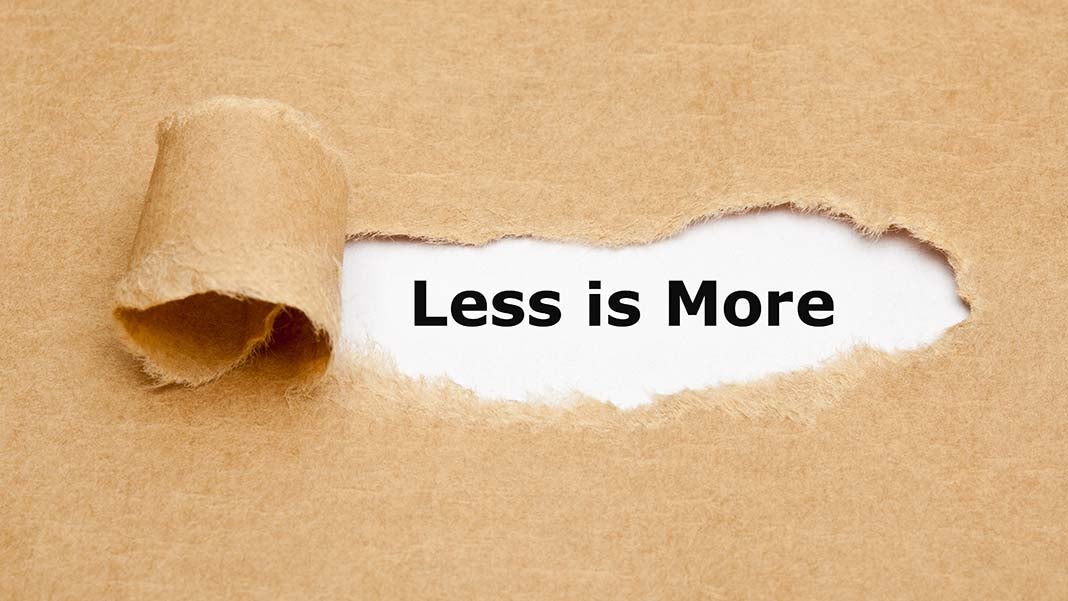
We have a complexity crisis in our organizations. There is no place where it hits harder than in the sales organization. Just think of what sales people face every day:
- They have the complexity of working with their customers, each struggling with and managing their own complexity. Multiply that by the number of customers, deals, opportunities they are working on. Each one is different, how things get done within each organization and each deal is different. It’s the sales person’s responsibility to manage that, helping the customer manage their own problem solving/buying process to make a decision.
- They have the complexity of understanding and presenting our products/solution portfolios. Think of your own company for a moment: how many major product lines/solutions do your people have to understand? How many products or variations within each do they have to have some level of knowledge? Maybe you have specialists to provide deep knowledge in select products, but each sales person has to have enough knowledge to start to find customers, qualify opportunities, and get things going. One client, a global telecom company has over 50 major product lines their account teams have to sell. Another, a technology components supplier has over 1000 part numbers in their “catalog,” another a semiconductor manufacturer has hundreds. For a professional services client, each offering is customized. While they have 15 key practices, the ultimate offering the sales person has to represent is a unique combination of services across those practices.
- Then sales people have the challenge of getting things done within our own organization. We have to manage handoffs between marketing and sales, SDRs and AEs, presales specialists, product specialists, other colleagues. We may have to work with legal, finance, manufacturing, product management, manufacturing, customer success/services. We may have to work with partners and channels. We have constant reviews, meetings. We have to manage these interactions in order to achieve our goals with customers. The larger the organization, the larger our “sales stack,” the more this impacts our abilities to get things done.
What are some of the warning signs of being overwhelmed by complexity?
- Time available for selling plummets: Track the time your sales people spend preparing for customers meetings/calls, conducting them, and following up. In many organizations we are seeing this fall far below 30% (Which isn’t great). Look at where they are spending their time; it’s probably navigating your own organizations.
- Increases in stalled or lost deals: CEB data indicates as much as 20% of stalled and lost deals are the results of internal complexity.
- Increases in the “sales stack;” Increasing numbers of internal systems that sales people must update decrease time spent on selling. It seems most of these systems that are supposed to help improve productivity actually may be having an adverse impact.
- Frequency of organizational changes: Constantly shifting organizational structures make it more confusing for sales people to get things done within the organization. Accompanying this, confusion about roles/responsibilities, things falling through the cracks, or overlaps and conflicts in responsibilities.
- “Program du jour” mentality: Rapidly shifting priorities, new sales/marketing programs rob sales people of time, create confusion and adversely impact focus.
- Rapid increases in internal support staff: This is a bit of a double edged sword. Increasing internal support staff can simplify the process of helping sales people get things done internally. However, sometimes, these increases cause greater confusion and take much more time if the sales person is continually having to update and work with multiple internal “helpers.”
- Increases in specialization: Again, this is one of those double edged swords. With increases in product/solution portfolio complexity, we need more specialists to support sales in presenting solutions to customers. However, the effort spent in engaging, coordinating, and managing these resources with customer situations.
- Increased voluntary turnover, absenteeism, lower morale: The more difficult and the more time required to manage internal complexity, the more sales people tune out, either by leaving or by “shutting down.”
Unfortunately, too many of our efforts to “help” these overwhelmed sales people is to provide them more tools, support, resources to free up their time to sell. Our desire to “help,” has the unintended opposite effect.
Perhaps, rather than doing more, a better strategy is to do less. Radically simplifying the sales person’s function, carefully looking at how they spend their time, what it takes to get things done and simplifying, rather than augmenting them is critical to helping reduce the complexity sales people face within their own organizations. Simple things like: Reducing the sales stack to only the most critical few tools, reducing the number of internal touchpoints, never initiating new programs/processes without first stopping two that are already in place, and others.
Rather than helping our people manage complexity, perhaps we are better served by reducing complexity.
Afterword: Thanks to CEB for some of their great research on these issues.












